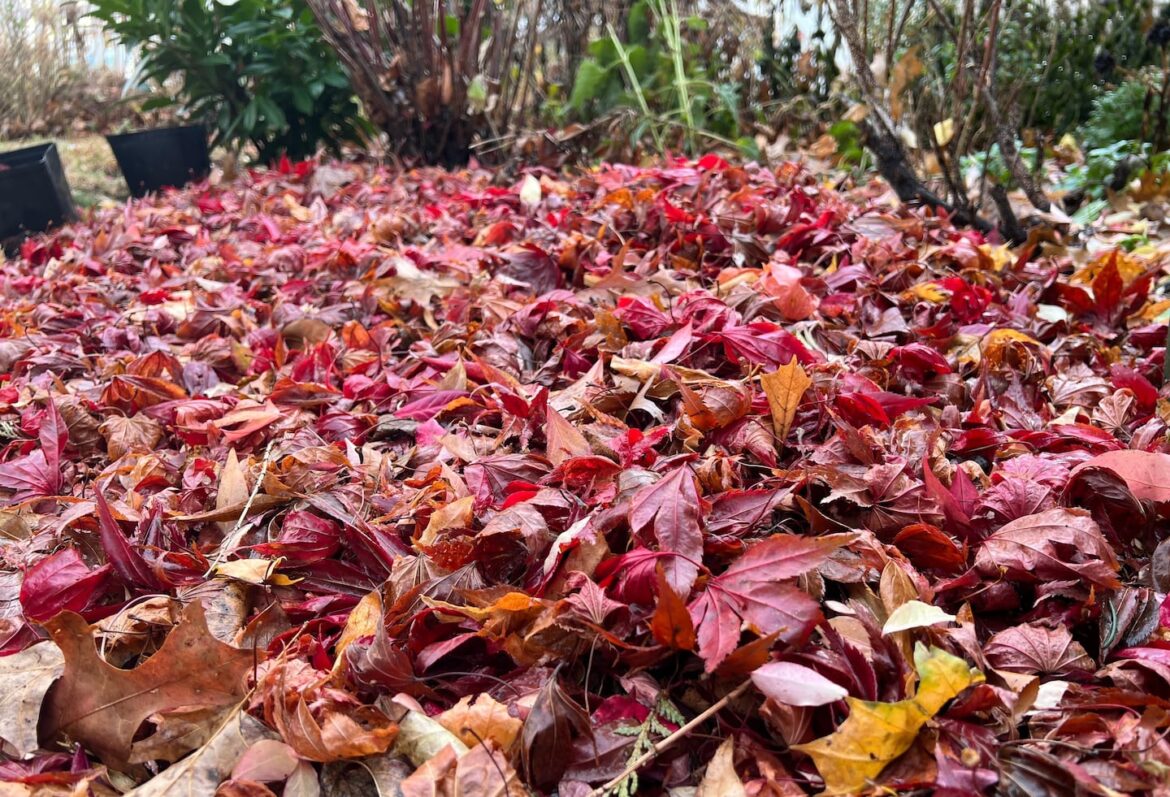The idea of gardening in November might not seem like it goes together, but in reality, this shoulder month between the warmth of early fall and the cold of early winter is still ideal for many garden activities.
Let’s break it down by parts of your yard. If you have a lawn, this is a great time to put down some lime. It helps sweeten the soil, which is generally acidic in our area. This makes it easier for nutrients to get into the grass plants when they start growing actively again in the spring. It’s a little late to be overseeding, but if you had some extra seed and wanted to give it a try, you could do it. There are special fertilizers that can be put down in November, but time is running out. If things turn cold in the second half of the month, hold off because the nutrients will not be used.
You can plant bulbs this time of the year and this includes garlic — one of my favorite things to grow in the garden, and it’s super easy. Each clove will give you a full bulb. Just be sure that you don’t use garlic that is treated because it will have trouble germinating. It just needs full sun and you need to place the base of the bulb about 2 inches below the soil line. I generally put my garlic about 4 to 6 inches apart in double rows.
 Garlic is super easy to grow in the garden.KATHY WILLENS/Associated Press
Garlic is super easy to grow in the garden.KATHY WILLENS/Associated Press
Just like you can plant garlic this time of the year, you can also still plant flower bulbs. Crocuses to daffodils to tulips can still be put into the ground as long as it’s not frozen. Check your bulbs to be sure that they’re firm and don’t have any mold on them, and discard ones that do.
This is also a good time of the year to identify invasive plants and remove them. Bittersweet can be easily identified by the vines, of course, but also the orange berries, which are opening up. Autumn olive holds its green color later than other plants, as does buckthorn. These plants can be taken out of your yard and destroyed.
Perennials and leaves as fertilizer
You can still move perennials and even divide them. There’s enough moisture in the ground at this point that they should be fine. Cover them with some pine straw or oak leaves to keep the ground a little warmer as the roots set in and prevent frost heaving.
Speaking of mulch, I try to leave those leaves that don’t get matted down on my garden beds. They act as good insulators. That said, some of the mushy leaves, like hosta, I do remove. Also, if you have a maple tree and the maple leaves get heavily matted down and wet, those can probably be mulched. Remember, leaves are nature’s free fertilizer. You can chop them up with a mower and put them back in the beds.
 Hosta leaves can be cleaned up and put in the mulch pile.Dave Epstein
Hosta leaves can be cleaned up and put in the mulch pile.Dave Epstein Leaves can either be left in the garden or mulched and put back in the beds.Dave Epstein
Leaves can either be left in the garden or mulched and put back in the beds.Dave Epstein
In terms of perennials that you’re not moving or dividing, coneflower, also known as echinacea, can be left for seeds for the birds all winter. The same is true for other perennials with seeds that can withstand the snow and wind of winter.
 Echinacea seed heads can be left in the garden for the birds all winter.Dave Epstein
Echinacea seed heads can be left in the garden for the birds all winter.Dave Epstein
Another thing you can do in the garden is inspect your shrubs and trees for broken branches. Look for those parts that, when weighted down by snow, could snap. You can remove them now before problems arise in a month or two.
If you do need to do some more significant pruning, I would still wait another month or more for the trees to be fully dormant.
Lastly, this is a good time of the year, before it gets really cold, to wrap up those hoses, clean the tools and put them away, and survey the garden, making notes for what you might want to be doing first thing in the spring.
Unless there’s deep snow cover, gardeners can do something almost every month, and November is a great month to be doing it!
Have a gardening question for Dave? Send them to weather@globe.com and we will include them in an upcoming column.


Comments are closed.